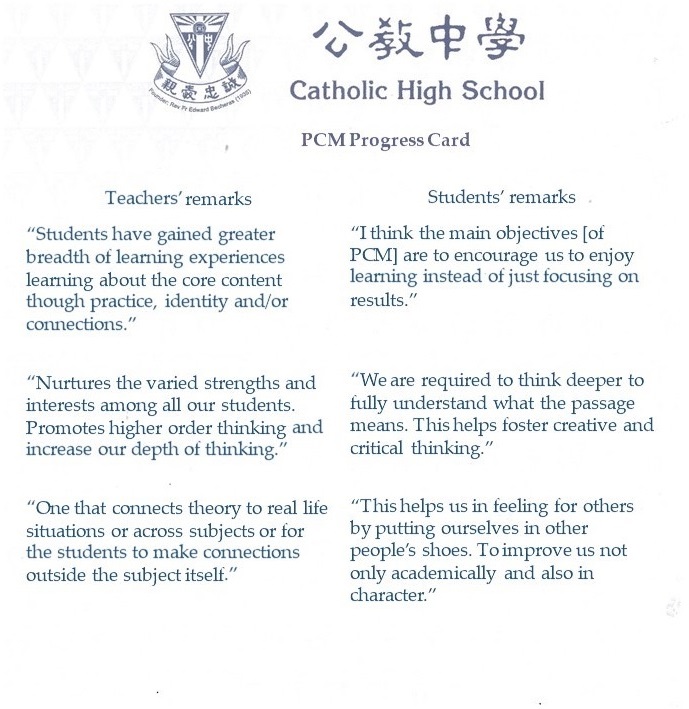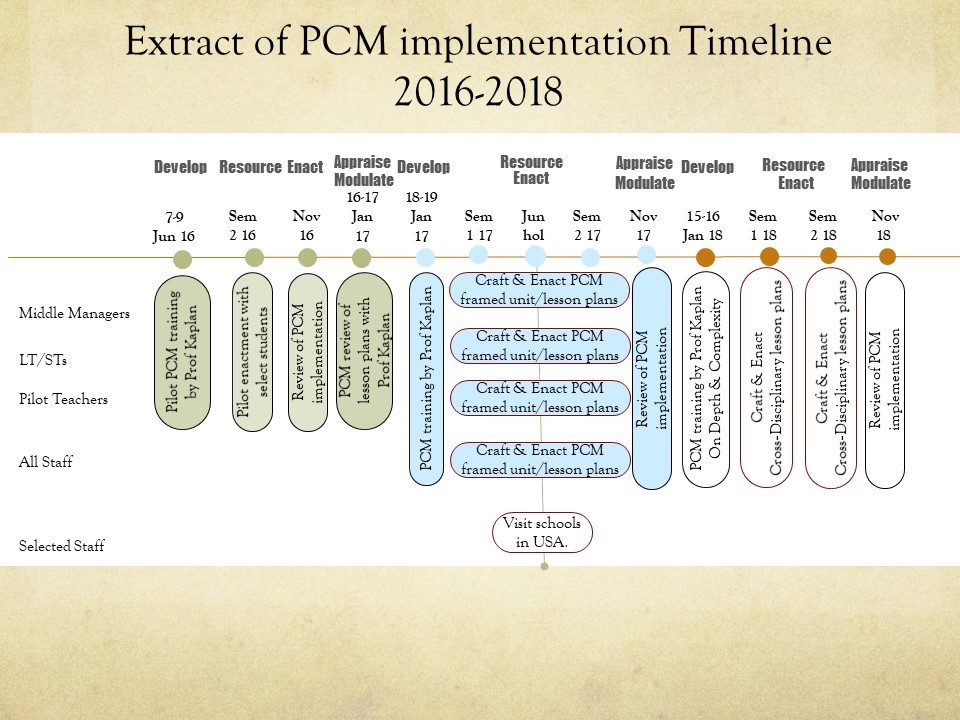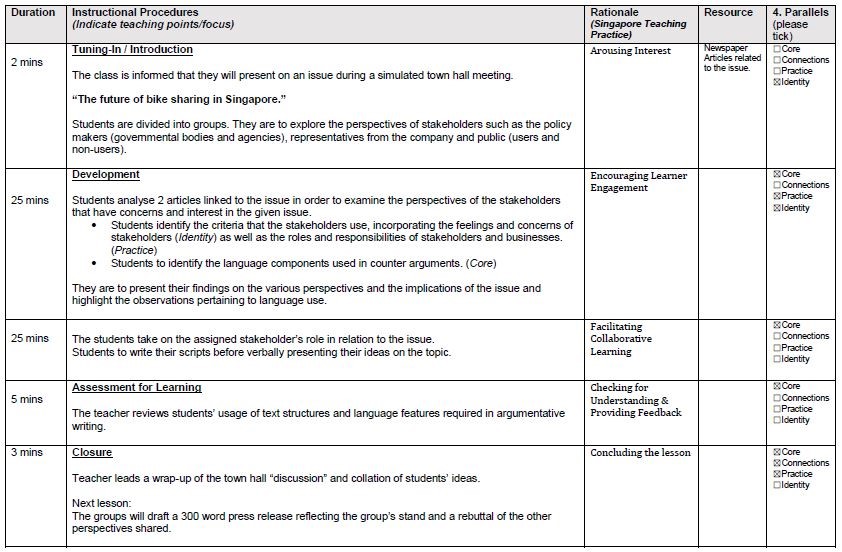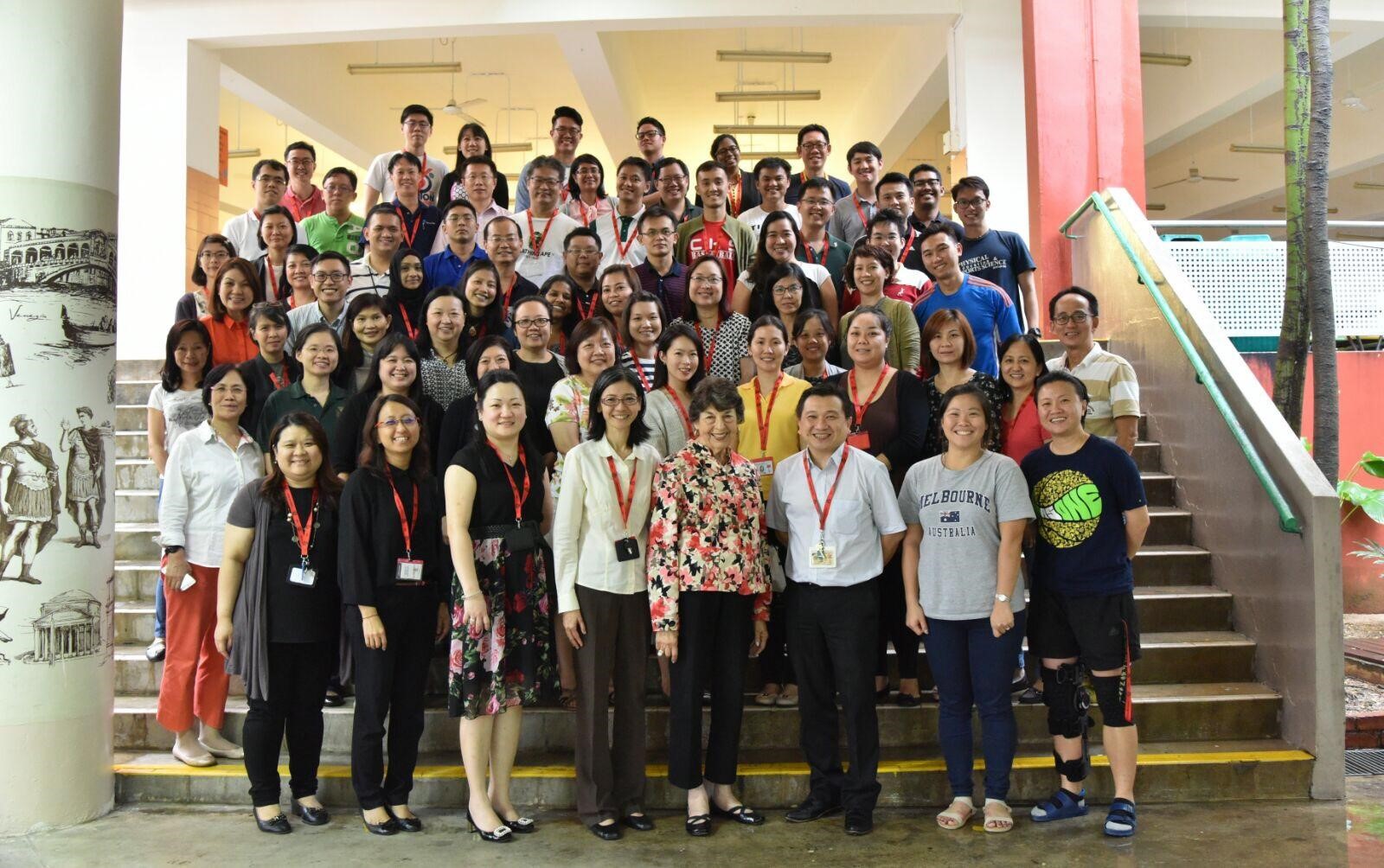Why Singapore’s English Teachers Should Embrace Singlish, Not Fight It
Is it time for Singaporean educators to embrace Singlish as a legitimate learning tool? What the Research […]
Read More
Contributed by Paul Ng Boon Leng and Claire Liu, Catholic High School, for SingTeach issue 71
The Integrated Programme (IP) was implemented in Singapore with the goal to stretch the potential of high ability learners. IP schools offer a six-year course leading to the GCE A-Level examination, International Baccalaureate Diploma or NUS High Diploma. Without the need for students to sit for their O-Level examination, IP schools have more white space to develop curricular changes in order to maximize student potential.
Catholic High School (CHS) embarked on its IP journey in 2013. Charged with the responsibility to prepare future generations of student leaders in the six-year trajectory, the school reviewed various curriculum models and subsequently identified the Parallel Curriculum Model (PCM) as a suitable curriculum platform to fulfil its mission. According to the Head of Department for Curriculum Innovation, Dr Lim Yian Hoon, “We selected the PCM as it creates a platform for students to develop deep understanding within and across disciplines, while inviting them to grow their individual dispositions, interests and values offered through the mastery of various disciplines.”
The school also felt that PCM was more accessible for teachers as they are able to easily identify the four parallels in many of their current teaching approaches. This would enable the teachers to better align the lessons to the school-wide curriculum design.

The PCM offers opportunities for differentiation and connections in the classroom. The four parallels – Core, Connections, Practice and Identity – are used to guide the design of lessons comprising different facets of the national curriculum. Each parallel can be used as a single central focus or combined to anchor the curriculum.
The Core parallel deals with the key knowledge and skills associated with the discipline. Mindful integration of the other parallels allows the educator to create meaningful learning experiences for the students. The Connections parallel allows students to make meaningful linkages across time, contexts and disciplines, while the parallel of Practice gets students to consider how the disciplinarians (experts in the field) might utilize the skills and knowledge acquired via the core in real-life practice. The parallel of Identity invites students to grow and adopt the values fundamental to the discipline.
As part of the evaluation of PCM, two studies were done to review the progress of our implementation. The general response gathered from both teachers and students was positive. Teachers reflected on the added depth and breadth when framing lessons with the PCM model while students shared on the multiple dimensions they had to consider as part of a PCM-framed lesson.

Sample remarks from teachers’ and students’ feedback
Teacher-readiness is important for the successful implementation of any curriculum change. At CHS, the implementation process first began by training a core team of teacher-leaders before it was rolled out in phases for all teachers.
The school also invited Professor Sandra Kaplan from the University of Southern California (USA) to conduct staff professional development workshops and provide curriculum consultations. These were complemented by in-house professional development sessions run by the CHS Lead and Senior Teachers. Lesson implementation was continually improved by incorporating feedback from Professor Kaplan and peers.

Extract of process of PCM implementation in Catholic High School
In addition to professional support, provision of resources such as time, research materials, lesson plans and specially-curated PCM resources are key to the successful planning of the CHS curriculum.

Extract of a sample lesson plan for English incorporating PCM
Essential to successful implementation of PCM was having sufficient time set aside for professional dialogue among teachers. Lead Teacher (Geography) Mrs Michele Lau shares, “The conversations teachers had within and between departments were most precious during this period of preparation. It increased our repertoire of skills to stretch and deepen our students’ learning. More importantly, it reframed our mental models, opening the door for us to see possibilities of aligning, synthesising and creating opportunities to design a purposeful and meaningful curriculum to engage our students.”
Besides learning about PCM in theory, it is important to see it “in action”. CHS teachers observed innovative pedagogies being enacted in high-performing primary and secondary schools in California, USA and engaged in professional dialogue with the teachers. Lead Teacher (Physics) Mr Tan Ping Hock shared that the team learnt new ideas, practices and innovations that they could use to mirror or contrast with their own mental models, educational practices, curriculum and innovations. The aim of the study trip was to come up with ideas and proposals on what could be done to enhance the school-based educational policies, school curriculum, assessment practices and organizational processes.
“It was a real eye-opener for us to see how PCM can even be used in a primary school,” Ping Hock shares. “The students were engaged, motivated and enthusiastic during lessons. The staff had regular professional development sessions to share ideas, aligning themselves and their classes such that they can better speak with one voice in the development of the students. This was observed across all the different high-performing public and private schools that we visited.”

Picture taken at CHS during a Professional Development Session with Professor Kaplan (first row, fourth from the right) in 2017
Principal of CHS (2015–2019) Ms Soh Lai Leng Magdalen shares, “PCM shapes how teachers teach and guides the mind-set of what we are trying to achieve in the classroom; infusing joy of learning into the teaching and learning, and focusing on deep learning which draws in different skills and depth. It makes learning more meaningful and more relevant to what is happening in the real world. Currently, we are at a consolidation phase, where teachers do see the benefits of PCM. Yet, time is needed for all our teachers fully embrace this mind-set, to make it more pervasive and effectively use the model to enhance their teaching and learning.”
CHS is currently evaluating the progress of PCM implementation in two separate studies which will soon be available on a different platform where the results will be shared and discussed.